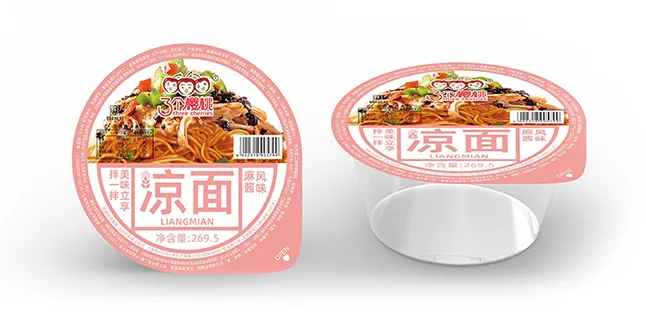Comparing Udon and Soba Noodles in Flavor, Texture, and Culinary Uses
The Distinctive Differences Between Udon and Soba Noodles
When it comes to Japanese cuisine, few dishes are as beloved and versatile as noodles. Among the variety of noodles, udon and soba stand out as popular choices, each with its own unique characteristics, cultural significance, and culinary applications. This article aims to explore the fundamental differences between udon and soba, highlighting their ingredients, textures, flavors, and typical dishes.
Ingredients and Preparation
The primary distinction between udon and soba lies in their ingredients. Udon noodles are made from wheat flour, water, and salt. This simple combination creates a chewy and thick noodle that has a delightful texture. Udon can vary in thickness, but they are generally broader and more substantial than soba noodles. The preparation of udon involves kneading and cutting the dough, which results in the signature chewy bite and soft texture.
On the other hand, soba noodles are made from buckwheat flour, often mixed with a small amount of wheat flour to enhance their elasticity. Buckwheat is a hardy grain that is gluten-free, making soba a popular choice for those looking for gluten-free options. Soba noodles are thinner and have a slightly rough surface, which helps them hold onto sauces and seasonings better than their udon counterparts.
Texture and Flavor
The texture of udon noodles is soft and chewy, creating a satisfying mouthfeel that is perfect for absorbing rich broths and sauces. This characteristic makes udon an ideal base for hearty dishes like udon soup, where the noodles soak up the savory flavors of the broth. The taste of udon itself is mild and subtle, allowing it to pair well with a variety of ingredients.
Conversely, soba noodles possess a nutty flavor, thanks to their buckwheat base. The texture is firm yet delicate, and the slender shape allows them to cook quickly. Soba can be enjoyed both hot and cold, making them a versatile ingredient in Japanese cuisine. When served cold, soba is often accompanied by a dipping sauce, such as tsuyu, which complements the noodles' natural earthiness.
what is the difference between udon and soba

Culinary Usage
Both udon and soba noodles can be enjoyed in a variety of dishes, but each has its traditional recipes that highlight its unique qualities. Udon is commonly featured in hearty soups and stir-fries. One popular dish is Kake Udon, where the noodles are served in a simple dashi broth, garnished with green onions, tempura, or other seasonal toppings. Another favorite is Yaki Udon, where the noodles are stir-fried with vegetables and protein, creating a satisfying one-pan meal.
Soba noodles, on the other hand, are often served in a more delicate manner. The classic Zaru Soba consists of chilled soba served on a bamboo mat, accompanied by dipping sauce and garnishes. This dish is particularly popular during the summer months when diners seek refreshing meals. Soba can also be found in soups, such as Soba Noodles in Hot Broth, where the buckwheat noodles provide a unique flavor profile compared to traditional wheat noodles.
Cultural Significance
Both udon and soba carry significant cultural value in Japan. Udon is believed to have originated in the 9th century and is often associated with comfort food, making it a staple in households across the nation. Conversely, soba is often linked to traditions of health and longevity, as buckwheat is seen as a nutritious grain. Eating soba on New Year's Eve is a Japanese custom, symbolizing the transition from one year to the next and promoting a long life.
Conclusion
In summary, while udon and soba might seem similar at first glance, their differences are profound. Udon's chewy, wheat-based noodles present a comforting element in hearty dishes, whereas soba's delicate, nutty buckwheat noodles offer a refreshing and versatile culinary experience. Understanding these distinctions not only enhances one’s appreciation of Japanese cuisine but also allows for a greater enjoyment of the unique flavors, textures, and traditions that each type of noodle brings to the table. Whether one prefers the heartiness of udon or the lightness of soba, both noodles play an essential role in the rich tapestry of Japanese food culture.
-
Unleash Your Inner Chef with Delectable Italian Pasta CreationsNewsAug.01,2025
-
Savor Health and Flavor: Irresistible Soba Noodles for Sale Await!NewsAug.01,2025
-
Nourish Your Body with Premium Organic Ramen - A Culinary Delight AwaitsNewsAug.01,2025
-
Elevate Your Dishes with Our Exquisite Kinds of Egg NoodlesNewsAug.01,2025
-
Dive into Flavorful Convenience with Our Ramen OfferingsNewsAug.01,2025
-
Discover Exquisite Types of Naengmyeon and Chilled Soba NoodlesNewsAug.01,2025
-
Is Whole Wheat Pasta Healthy?NewsMay.30,2025
Browse qua the following product new the we

















































































































